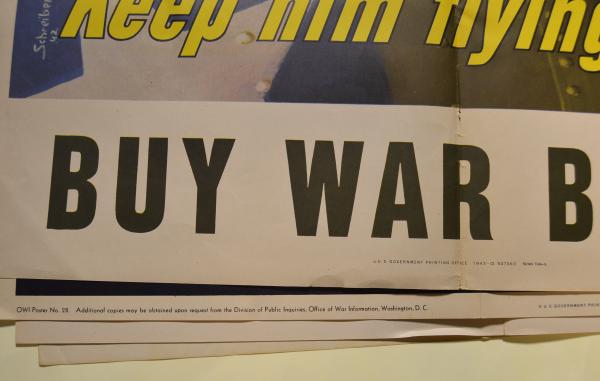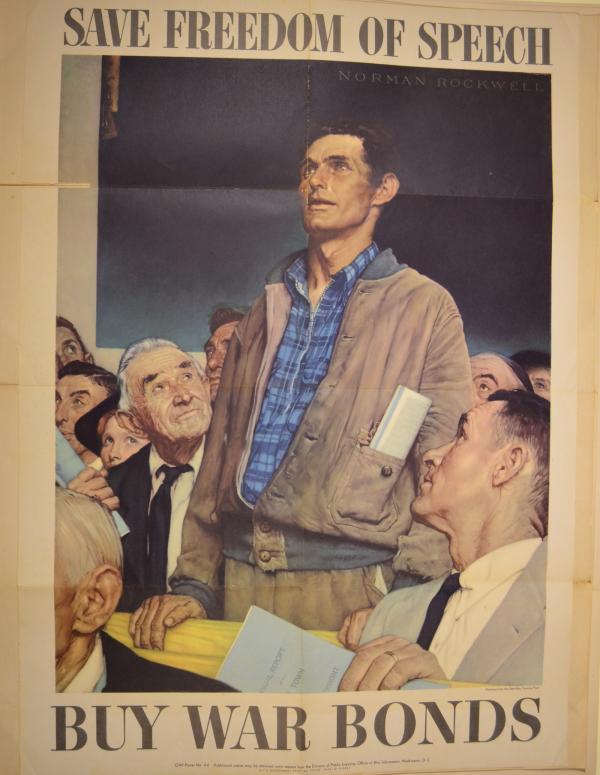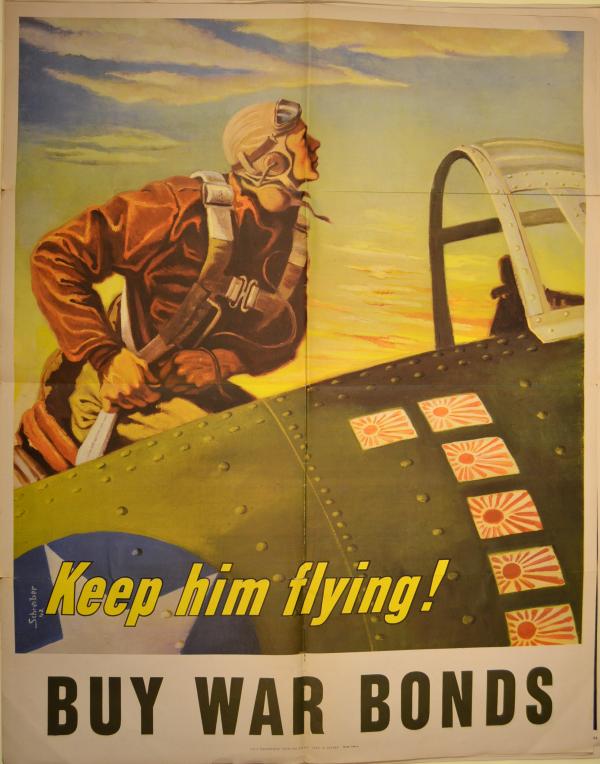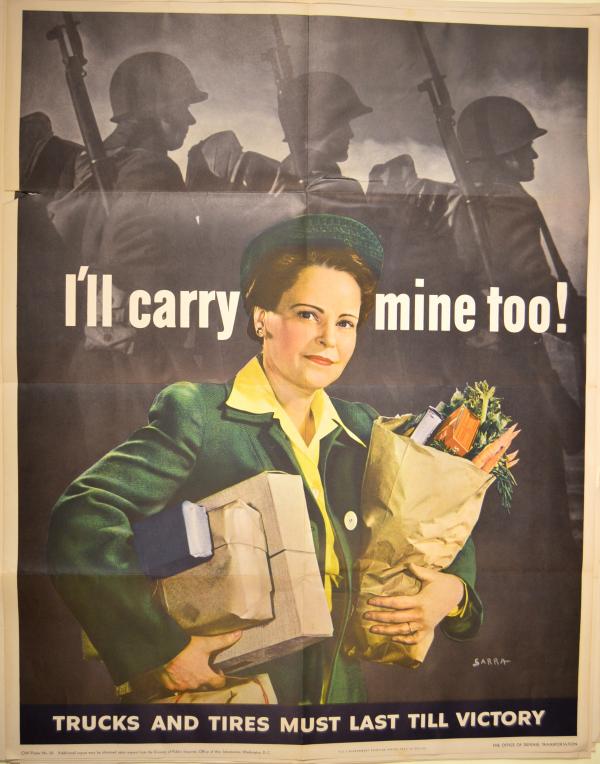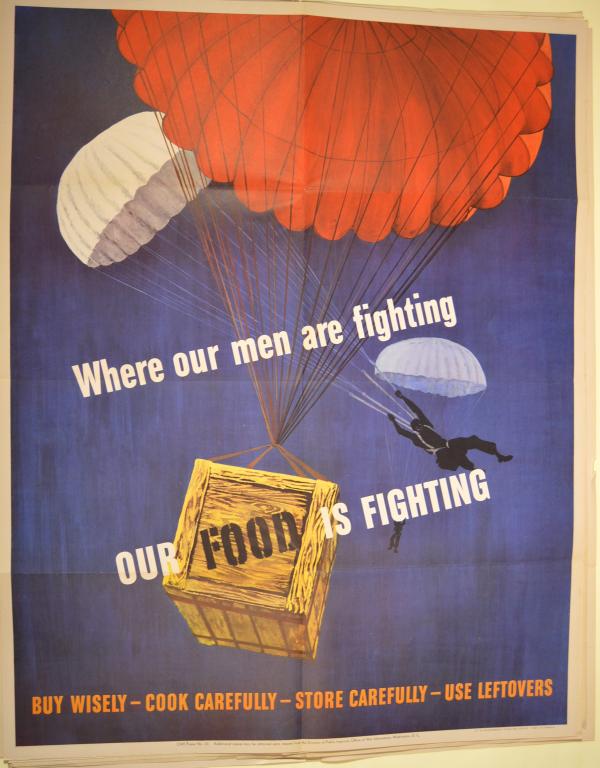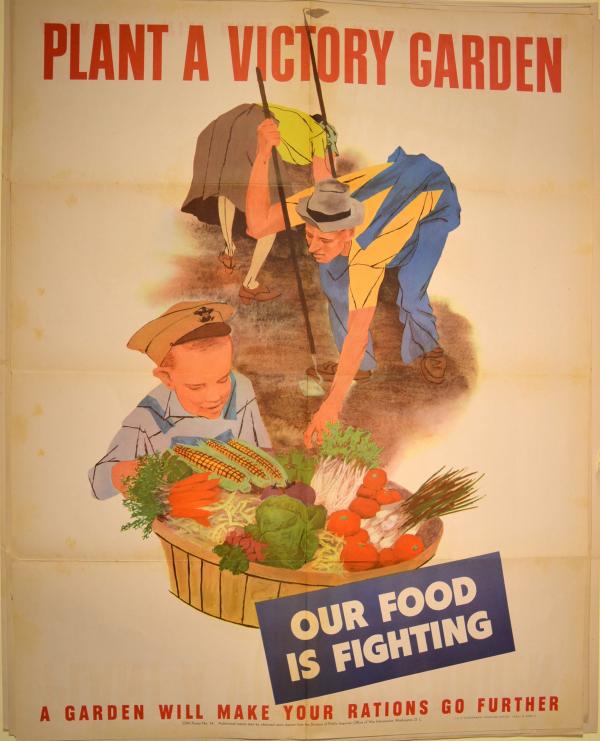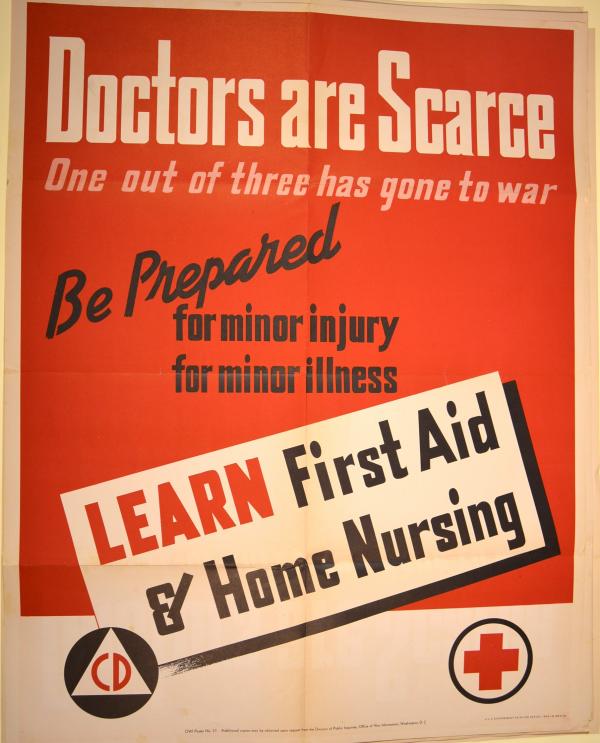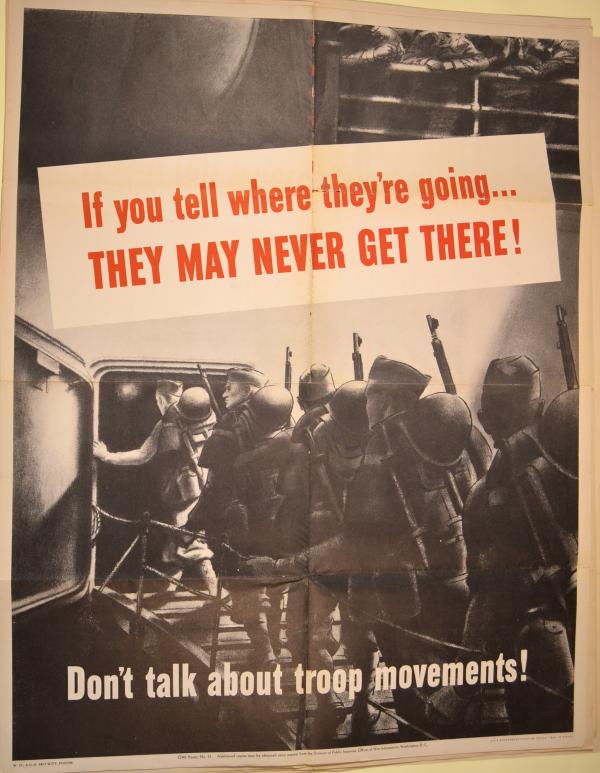Money was tight for Americans coming out of the Great Depression and gearing up to fight World War II. Living on a median income in 1942 meant earning about $2000 a year. The government needed to borrow a lot of that to pay for the war. The plan was to sell War Bonds (they were called ‘Defense Bonds’ until Pearl Harbor, then they became ‘War Bonds.’) that actually only returned a 2.9 percent interest after 10 years.
How do you get Americans to buy into a deal like that? The same way you get them to buy toothpaste... advertising - with what is likely the biggest ad campaign in history, involving newspapers, radio (TV was just getting started), posters, magazines, rallies and speeches.
A collection of period posters at the Library of Florida History clearly illustrates the tone the campaign took; aim for the patriotic heartstrings.
Some of the leading illustrators of the day took part.
Perhaps the best known now is Norman Rockwell (1894-1978) and his “Four Freedoms” works, represented in this collection by the Freedom of Speech poster. The four works provided basic images of the abstract notions laid out by President Franklin Roosevelt in a 1941 speech on what America was fighting for. Inspiring for sure, but at bottom, literally in the case of this poster, it is advertising for the immediate message, “Buy War Bonds.”
Other artists appealed to civilians with a desire to ‘support the boys’ directly.
Belgian-American artist George Schreiber (1904-1977) used the skills he learned, ironically, at art schools in Elberfield, Dusseldorf and Berlin, Germany and perfected working for German newspapers before he came to the U.S. in 1927, to create a scene guaranteed to inspire Americans still seething over Japan’s attack on Pearl Harbor.
As the war went on and people on the home front felt more and more impacts, the government had additional messages to get out; the American version of “keep a stiff upper lip and solider on.”
Another immigrant artist from an enemy nation, Italian Valentino Sarra (1903-1982), who went on to be one of the most successful advertising photographers in the country, took on the issue of putting up with shortages of fuel, rubber and vehicles. His 1943 poster for the Office of Defense Transportation message was simple, ‘if they can walk, you can walk.’
Of course not all posters were created by well known artists. Competent illustrators in government employ turned out posters on various issues.
For example, raising awareness of the importance of food to soldiers in harm’s way, and
what civilians, men, women and children, could do about it.
Just as women were moving into jobs vacated by the millions of men who went off to war, individuals were urged to prepare to deal with illness and injury on the home front while a third of trained physicians were involved in the war effort.
Of course there was the constant fear of spies and even the inadvertent leak of sensitive information through ‘friendly’ but insecure communication lines. Remember this was an era when the U.S. Government had thousands working to decode radio messages of both enemy and allied countries.
This collection is an excellent way to understand what “The Greatest Generation” went through during the war. It says something about the culture of the times. All the people shown in these posters are white and working class. In the garden image, the woman is apparently wearing at least one silk stocking even while working in the garden.
They also reflect on the economy. It was a time the government ramped up spending, and full employment collided with rationing. War bonds were seen as a way to remove money from circulation and reduce inflation.
Perhaps most importantly, they show how folks were willing to make a moral and financial commitment to the war effort, and America’s future.
